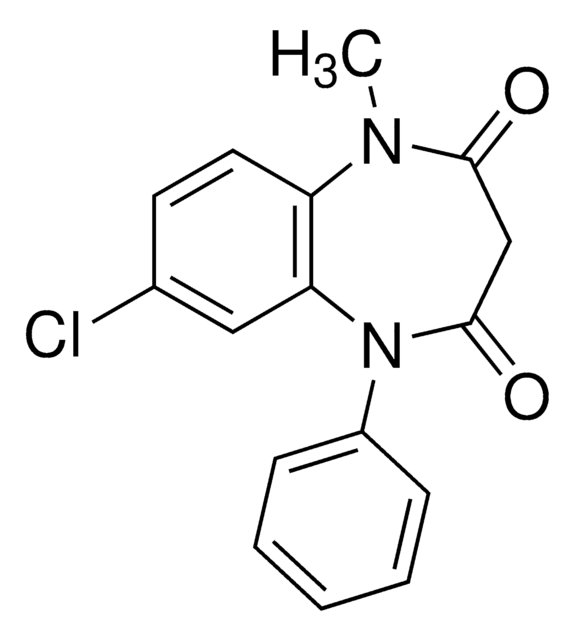P6500
Pentylenetetrazole
≥99% (GC), powder, CNS stimulant
Synonyme(s) :
α,β-Cyclopentamethylenetetrazole, 1,5-Pentamethylenetetrazole, 6,7,8,9-Tetrahydro-5H-tetrazolo[1,5-a]azepine, Metrazole
About This Item
Produits recommandés
product name
Pentylenetetrazole,
Forme
powder
Point d'ébullition
194 °C/12 mmHg (lit.)
Pf
59-61 °C (lit.)
Température de stockage
−20°C
Chaîne SMILES
C1CCc2nnnn2CC1
InChI
1S/C6H10N4/c1-2-4-6-7-8-9-10(6)5-3-1/h1-5H2
Clé InChI
CWRVKFFCRWGWCS-UHFFFAOYSA-N
Vous recherchez des produits similaires ? Visite Guide de comparaison des produits
Description générale
Application
Actions biochimiques/physiologiques
Mention d'avertissement
Danger
Mentions de danger
Conseils de prudence
Classification des risques
Acute Tox. 3 Oral - Eye Irrit. 2 - Skin Irrit. 2 - STOT SE 3
Organes cibles
Respiratory system
Code de la classe de stockage
6.1C - Combustible acute toxic Cat.3 / toxic compounds or compounds which causing chronic effects
Classe de danger pour l'eau (WGK)
WGK 3
Point d'éclair (°F)
Not applicable
Point d'éclair (°C)
Not applicable
Équipement de protection individuelle
Eyeshields, Faceshields, Gloves, type P2 (EN 143) respirator cartridges
Certificats d'analyse (COA)
Recherchez un Certificats d'analyse (COA) en saisissant le numéro de lot du produit. Les numéros de lot figurent sur l'étiquette du produit après les mots "Lot" ou "Batch".
Déjà en possession de ce produit ?
Retrouvez la documentation relative aux produits que vous avez récemment achetés dans la Bibliothèque de documents.
Les clients ont également consulté
Notre équipe de scientifiques dispose d'une expérience dans tous les secteurs de la recherche, notamment en sciences de la vie, science des matériaux, synthèse chimique, chromatographie, analyse et dans de nombreux autres domaines..
Contacter notre Service technique














